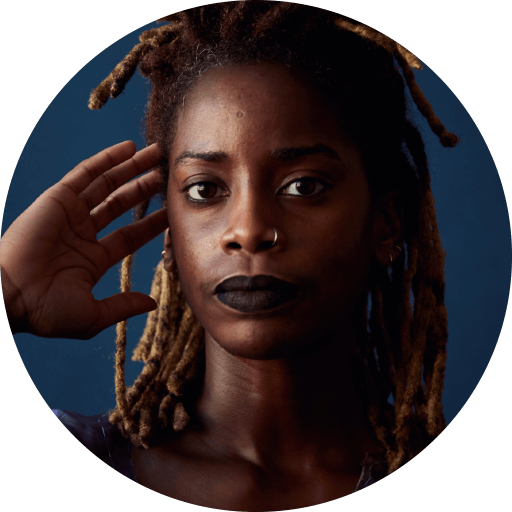Review: Looking for a Hero? Hold on to These Dancers
Gia Kourlas, New York Times
Gia Kourlas, New York Times
The choreographer Donna Uchizono doesn’t shy away from political work, but it isn’t overtly so. Throughout her new “Wings of Iron,” I couldn’t help thinking back to her acclaimed “State of Heads” (1999), in which, as a new millennium was beginning, so too was a new presidential administration. She envisioned those in leadership as being detached from the country, which is how the dancers moved: with their heads seemingly disconnected, almost dislocated, from their bodies.
“State of Heads” was about waiting for a hero. Now, more than 20 years later — with the world in even greater peril — the search is still on. In “Wings of Iron,” set to a score by the cellist and composer Okkyung Lee, Uchizono places four vivid dancers — Bria Bacon, Natalie Green, Molly Lieber and Pareena Lim — in a charged landscape, where turmoil bubbles just beneath the surface and movement is coated with a rough edge.
Rich with choreographic invention, “Wings of Iron” is full of nuance and detail — though both can sometimes feel piled on too thickly — as the dancers, wearing silver party dresses, gradually allow vulnerability and intimacy to seep through their mobile bodies.
Throughout this evening-length work, a presentation by the Chocolate Factory and Baryshnikov Arts Center, where it had its premiere on Wednesday, the cast continually searches for balance and groundedness despite the force of their spinning feet and weighted walks.
Their movement may not always be gentle, but the dancers are hardly alienating; throughout, there is a sense of seeking a connection with the audience. At the start, the dancers stand on chairs placed in a U-shape in front of the small crowd; behind them is another audience of sorts — enlarged black-and-white photographs by Michael Grimaldi of the dancers in costume, staring straight ahead.
We in the audience aren’t just anonymous spectators, but in a shared space. Sometimes you find yourself locked in a nonconfrontational gaze with a dancer. And a question is frequently asked aloud: “If you were to dedicate a dance to someone, who would that person be?”
Later in the evening, four audience members got the chance to do just that. They chatted privately with a dancer or, in the last case, two, who then composed a dance — brief bursts of movement, seemingly full of secrets — on the spot. As the work unfolded, it became clear that we had already witnessed one of these private dances in its opening moments.
Uchizono was first seen in the back corner of the stage talking with a woman. She then performed a jittery solo that sent her across the space with decisive, pounding steps, as she held her fists at her hips or raised them overhead. Beneath its defiance, it was tender and emotional — setting the stage for what was to come. When it was over, both Uchizono and the woman took seats in the front row.
“Wings of Iron” unfolds gradually, displaying Uchizono’s ability to slowly highlight and magnify shards of hidden virtuosity in inventive, off-kilter steps. Standing in demi-pointe, the dancers circle their hips until their bodies are alive with vibrations. They smack themselves, eventually creating a collective rhythmic beat.
Lieber, astounding in both her moments of strength and stillness, holds Bacon tightly and spins her so that her legs fly through the air. Bacon returns the favor, and the action plays on repeat as they take turns. Their exhaustion makes their effort heroic, their trust in each other becoming more acute. But there are also moments that turn more inward, as in an extended passage of footwork for Lim and Bacon: Their side-by-side steps — crossovers, brushes, toe lifts — stitch intricate patterns on the surface of the stage, which at times resembles a jewel box.
Under Joe Levasseur’s ever-shifting wintry lighting, the dancers exude a feminist spirit; they have one another’s backs. There’s no story, yet somehow they are a story. In a short video about the work’s beginnings, Uchizono talks about finding inspiration in the poem “Jane Addams” by Gwendolyn Brooks. Near its start is a line about “the giantless time,” which resonates with how Uchizono sees the world now. Where are the giants, those, as the poem goes, who “must bother,” who, in other words, persevere no matter what? To Brooks, Addams is a giant; for Uchizono, the dancers are. Quietly and purposefully, they endure.
In “Wings of Iron,” that idea of persistence — and tenacity — is the skeleton of the dance, both to its benefit and disservice. Sometimes choreographic passages seem too interchangeable to be effective; others drag on. But the point Uchizono is making with her exceptional cast is in the title. These dancers don’t just stand around waiting for life to happen to them. They are the wings, and their humanity has heft. It’s made of iron.
Gia Kourlas for the New York Times – May 19, 2022





























